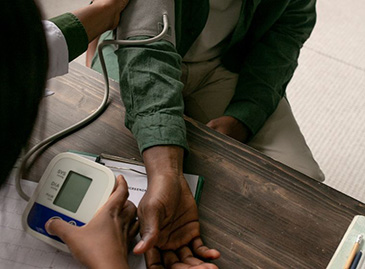Arthroscopy in Turkey
Arthroscopy is a minimally invasive surgical procedure that involves using a small camera to visualize and treat joint-related issues, often leading to quicker recovery and less postoperative discomfort compared to traditional open surgery.
We are with you throughout the entire process
You will find some useful information that will help you prepare the necessary organization to prevent all problems and make the necessary arrangements to ensure that everything goes smoothly during your stay in Turkey.
After our with doctor answers all your questions, doctor will explain to you how the operation process will proceed.
You will have a preliminary meeting with the doctor and team we work with before the operation.
Read the document we sent you before coming to Istanbul and be sure to follow the rules.
During the recovery process, our teams will call you, ask about your condition and ask for photos.

Frequently Asked Questions
You will find detailed information about the operation and organization you will need before coming to Turkey. You can contact your sales representative for any further questions.
- Arthroscopy is a minimally invasive surgical procedure (keyhole surgery) utilized to pinpoint and treat joint related problems.
- For the knee, shoulder, elbow, wrist, hip, and ankle joints, arthroscopy is commonly performed.
- Unlike open surgery, arthroscopy uses small incisions, leading to faster recovery, minimal scarring, and less pain.
- The procedure usually takes between 30 minutes to a couple of hours, depending on the complexity of the condition.
- The cost of arthroscopy in Turkey varies depending on the joint treated and hospital but is generally more affordable than in Western countries.
Latest posts & articles
Authorized by the Ministry of Health and Tourism in Turkey
A minimally invasive surgical approach to diagnose and fix joint issues is arthroscopy. Often referred to as keyhole surgery, in this operation, tiny incisions are made, and a thin, flexible tube equipped with an arthroscope and a camera is introduced into the joint. This eliminates the need for major incisions and enables orthopedic surgeons to see the joint components and make the required repairs.
Arthroscopy has drastically improved orthopedics by providing a more effective and safe substitute for open surgery. It's a popular option for joint-related disorders since patients have less discomfort, faster recovery times, and less scarring.
What is Arthroscopy Used For?
Arthroscopy is a procedure used for both diagnosis and treatment. It allows surgeons to examine the inside of a joint in detail and address conditions such as:
- Torn ligaments and cartilage damage
- Joint inflammation and infections
- Loose bone or cartilage fragments
- Joint stiffness or instability
- Early-stage arthritis
By addressing these issues early, arthroscopy can help prevent further joint deterioration and the need for more invasive surgeries in the future.
Common Joints Treated with Arthroscopy
This technique is commonly used for various joints, including:
- Knee Arthroscopy: Meniscus tears, ACL injuries, and cartilage damage.
- Shoulder Arthroscopy: Rotator cuff tears, labral injuries, and impingement syndrome.
- Hip Arthroscopy: Labral tears, femoroacetabular impingement (FAI), and cartilage disorders.
- Ankle Arthroscopy: Ligament injuries, impingement, and cartilage defects.
- Wrist Arthroscopy: Carpal tunnel syndrome, ligament tears, and ganglion cyst removal.
Who is a Candidate for Arthroscopy?
Not all joint conditions require surgery, but arthroscopy is recommended for individuals who:
- Experience persistent joint pain despite non-surgical treatments.
- Have joint swelling or instability affecting mobility.
- Suffer from sports-related injuries.
- Require surgical intervention for ligament or cartilage repair.
The Arthroscopy Procedure: Step-by-Step
Usually done as an outpatient procedure, arthroscopy allows patients to go home the same day. The procedure follows these steps:
- 1Anesthesia Administration – Depending on the joint being treated, general, regional, or local anesthesia is used.
- Small Incisions – Tiny cuts are made around the affected joint.
- Insertion of the Arthroscope – A thin tube with a camera is inserted to provide a detailed view of the joint’s interior.
- Surgical Repairs – Specialized instruments are used to remove damaged tissue and repair torn ligaments or smooth cartilage.
- Closure and Recovery – A compression bandage is applied, and stitches or tiny bandages are used to close the incisions.
Recovery and Rehabilitation
One of the key advantages of arthroscopy is faster recovery compared to traditional surgery. Recovery depends on the joint treated and the complexity of the procedure.
In general:
- Most patients can walk or move the joint within a few days.
- Pain management includes prescribed medications and icing the area.
- Physical therapy is essential for regaining the flexibility and strength of joints.
- Full recovery can take a few weeks to several months, depending on the condition treated.
Benefits of Arthroscopy Over Traditional Surgery
Arthroscopy offers several advantages over open surgery:
- Minimally invasive – Smaller incisions lead to less tissue damage.
- Reduced pain and swelling – Shorter healing time and minimal discomfort.
- Quicker return to daily activities – Faster rehabilitation and lower downtime.
- Minimal scarring – Cosmetic benefits due to tiny incisions.
- Lower risk of complications – Reduced chances of infections and blood clots.
Risks and Complications
While arthroscopy is generally safe, there are some risks, including:
- Infection – Though rare, proper wound care reduces the risk.
- Blood Clots – Early mobility and compression stockings help prevent this.
- Swelling and stiffness – Can be managed with physiotherapy.
- Persistent pain – Usually resolves with rehabilitation, but in rare cases, further treatment may be needed.
Cost of Arthroscopy in Turkey
Turkey has emerged as a top medical tourism destination, providing excellent orthopedic care at affordable costs. Factors affecting the cost include:
- The complexity of the procedure.
- The specific joint being treated.
- The hospital and surgeon’s expertise.
Arthroscopy in Turkey is significantly more affordable than in Western countries without compromising modern technology and medical expertise.
Why Choose Istanbul Med Assist for Arthroscopy?
Istanbul Med Assist offers high-quality arthroscopy services with the following:
- Experienced orthopedic surgeons trained in advanced techniques.
- Modern medical facilities with cutting-edge technology.
- Comprehensive care from consultation to post-surgery recovery.
- Transparent pricing with no hidden fees.
- Support for international patients, including travel assistance.
With Istanbul Med Assist, you receive top-tier medical care in Turkey at an affordable price with personalized attention.
Conclusion
Arthroscopy is a revolutionary keyhole surgery that offers a safe, effective, minimally invasive method of treating joint-related problems. It has emerged as the go-to option for many patients globally due to its quicker recovery, less pain, and superior results.
Choosing a trusted medical provider is essential for successful treatment. Istanbul Med Assist offers cutting-edge arthroscopy procedures with expert care, making Turkey an excellent destination for affordable, high-quality orthopedic treatment.
If you are experiencing joint pain or require arthroscopic surgery, consider Istanbul Med Assist for expert care and world-class treatment at an affordable cost.



